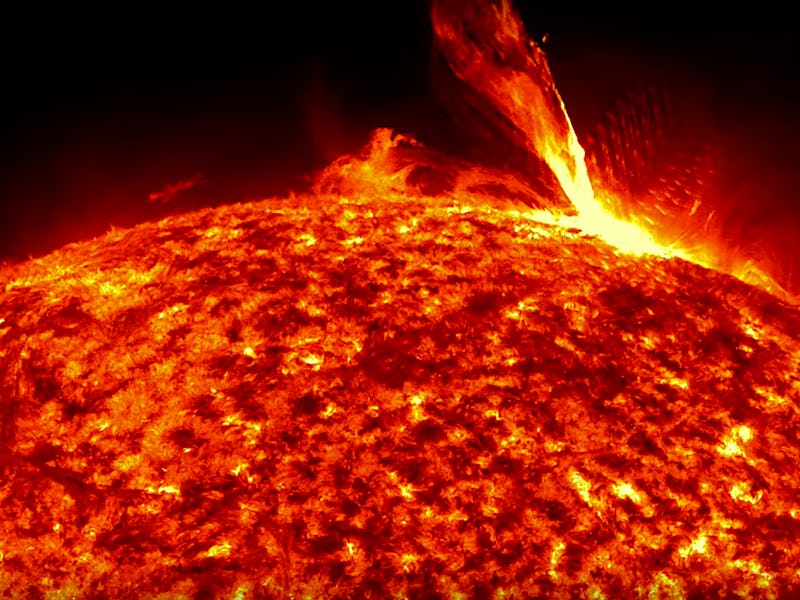From down here on Earth, the sun always looks pretty much the same (at least as far as we can tell without staring at it). Of course, that big old ball of hot plasma is actually the site of a ton of dramatic, explosive action — including massive solar flares that NASA scientists can still detect even when they’re one the complete opposite side of the sun.
An international team of scientists has observed high-energy light from solar flares on the far side of the sun using the Fermi Gamma-ray Space Telescope, NASA revealed Monday. These observable flares on the far side of the sun, which are known as behind-the-limb flares, are rare but they happen periodically. On a few occasions, NASA’s Solar Terrestrial Relations Observatory was positioned on the far side of the sun, allowing it to directly record the flare, while Fermi scoped it out from the other side. This additional view has been very helpful for researchers.
NASA's STEREO satellites captured three solar flares on the side of the sun facing away from Earth. However, satellites around Earth were able to detect gamma rays from the flares regardless.
These three solar flares, which shot off billion-ton clouds of solar plasma as coronal mass ejections, took place on October 11, 2013, and January 6 and September 1 in 2014. NASA says the reason why Fermi was able to spy them from the other side of the sun is because particles traveled along magnetic field lines that extend from the sun’s surface. Scientists believe that these magnetic field lines must stretch from the front to the back of the sun, creating a sort of particle highway that rockets light from far off solar flares into view.
“Fermi is seeing gamma rays from the side of the sun we’re facing, but the emission is produced by streams of particles blasted out of solar flares on the far side of the sun,” explained Nicola Omodei, a researcher at Stanford University in California, in a statement. “These particles must travel some 300,000 miles within about five minutes of the eruption to produce this light.”
This composite made with images from NASA's Solar Dynamics Observatory and the NASA/ESA Solar and Heliospheric Observatory show an big coronal mass ejection coming off of the far side of the sun.
Given that an especially powerful solar flare could start a new dark age on Earth, any new understanding that scientists are able to glean about this space weather phenomenon are pretty worthwhile.
